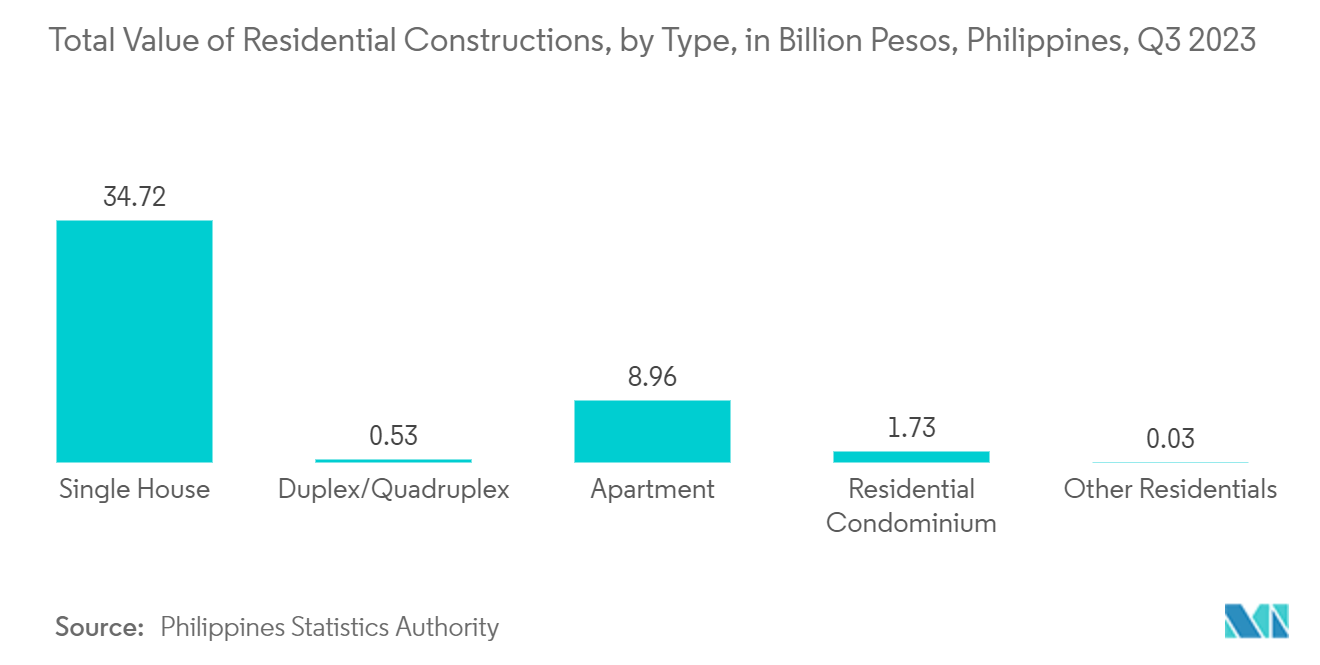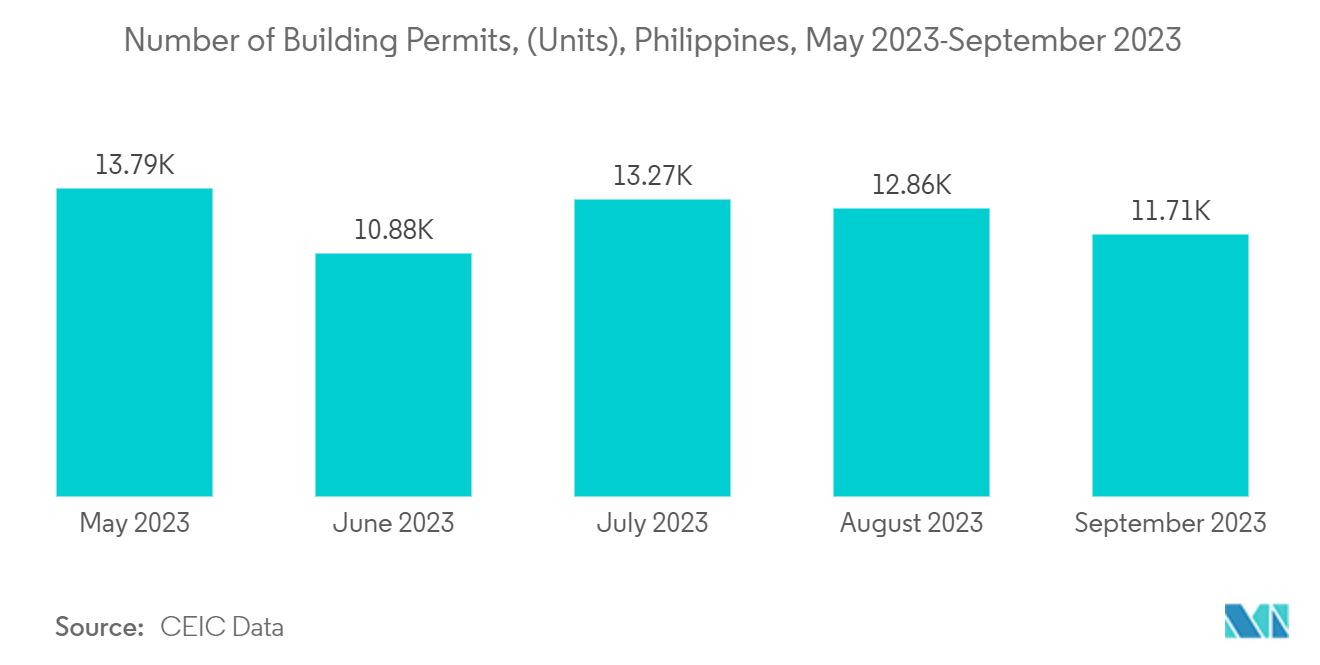Market Trends of Philippines Structural Insulated Panels Industry
Increasing Demand for EPS Panels
- Expanded polystyrene (EPS) panels are the ones in which rigid cellular EPS insulated foam plastic is sandwiched between two outer skins of oriented strand board (OSB). This creates strong building panels to construct exterior walls, roofs, ceilings, and floors.
- Expanded polystyrene insulation is lightweight, rigid, and closed-cell insulation. It has several compressive strengths and can withstand high loads and back-fill forces. This closed-cell structure provides minimal water absorption and very low vapor permeance.
- According to the Philippine Statistics Authority reports residential buildings reported the highest number of constructions, 25,411 or 67.14% of the total number of constructions during the third quarter of 2023, with an annual growth rate of -24.8%. Whereas the non-residential type of constructions stood at 8,273 or 21.86% of the total number of constructions, indicating an increase of 3.1% compared with the count in the same period of the previous year.
- EPS panels offer a highly cost-efficient and high-performing highly alternative to high-performing traded (XPS) polystyrene foam, making it the perfect choice for many insulation and construction applications.
- Expanded Polystyrene (EPS) is a rigid, closed-cell, thermoplastic foam material produced from solid polystyrene beads. The gross value added generated from manufacturing rubber and plastic products in the Philippines amounted to nearly USD 0.66 billion in 2022.
- One of the chief advantages of using EPS panels over others is that EPS is CFC- and HCFC-free and environmentally safe. This relieves the strain on the oil and petroleum reserves by efficiently reusing scrap material.
- EPS panels are typically used as wall and ceiling panels in freezers, clean rooms, cool rooms, portable buildings, and food production, and as cost-effective partitions and permanent or temporary interior walls.
- All the properties mentioned above of EPS panels are expected to increase their demand over the forecast period.

Surge in Demand from the Construction Sector
- Structural insulated wall panels are generally available in thicknesses of 4-1/2 inches and 6-1/2 inches. Manufacturing of curved wall panels is possible, and it is often more practical to use stud framing for non-orthogonal geometries.
- The whole wall R-value of a wall assembly is currently the best and the most followed method of quantifying the total thermal performance. The whole wall R-value takes the resistance of heat flown through an opaque cross-sectional area of the insulation and structure into account. In contrast, the total energy loss at the interfaces of the wall with the roof and floor is accounted for.
- The total volume of the panels used as structurally insulated wall panels is much higher than those used as structurally insulated roof panels.
- The building and construction industry thrives in several emerging economies, including the Philippines. Various initiatives launched by the government are boosting the demand for construction activities in the country, therefore positively impacting the growth o the structural insulated panels market in the country.
- For instance, the 'Build, Build, Build' program, a program by the government based on investing adequately in infrastructure to support and sustain the country's growing economic activities represented by its Gross Domestic Product.
- The BBM program has targets of making infrastructure spending to reach 5 to 6% of GDP annually and aid the country in gaining high growth of 6.5 to 8.0% of GDP in the medium term.
- Moreover, in 2023, the National Economic and Development Authority (NEDA) Board approved a total of 194 infrastructure projects worth PHP 9 trillion (USD 160.1 billion).
- According to the Department of Trade and Industry (DTI), the Philippines' construction industry stands to have a cumulative value of USD 2.37 trillion, by 2030, with the implementation of the Philippine Construction Industry Roadmap, 2020-2030, which will be responsible for the high growth of the market studied over the forecast period.
- According to the survey conducted by the National Economic and Development Authority of Philippines, there are currently 68 ongoing, 52 under preparation, and 25 approved for implementation infrastructure projects.
- Aboitiz Infra Capital, a unit of Philippines-based conglomerate Aboitiz Equity Ventures, has a pending USD 359 Mn unsolicited proposal to operate, maintain and expand the airport in Bohol.
- A government-owned conglomerate of the Philippines launched a tender for a solar project in New Clark City in Q4 of 2022. The Bases Conversion and Development Authority (BCDA) is looking for an investor to develop a large-scale plant on a plot measuring 36 hectares.
- All the factors above, in turn, increase the demand for structural insulated panels to be used in the building and construction industry.

Structural Insulated Panels Market in Philippines Report Snapshots
- Structural Insulated Panels Market in Philippines Market Size
- Structural Insulated Panels Market in Philippines Market Share
- Structural Insulated Panels Market in Philippines Market Trends
- Structural Insulated Panels Market in Philippines Companies
- Structural Insulated Panels Market in Philippines News

